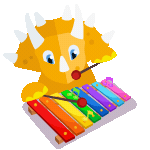Swahili Treasures: Beads, Baskets, and Beautiful Designs
The Swahili culture of East Africa is not only known for its language and food but also for its rich tradition of arts and crafts. From intricate architecture to poetic music, the creative expressions of the Swahili people offer children a fascinating look into a culture that values beauty, tradition, and spiritual meaning.
Visual Arts Without Living Figures
One of the most interesting aspects of Swahili art is what it doesn’t include. Because of Islamic beliefs, traditional Swahili artwork avoids depictions of people and animals. Instead, artists use geometric patterns, floral motifs, and abstract forms to decorate carpets, pottery, jewelry, and textiles. These detailed designs require patience and skill, and they hold deep cultural meaning.
Beautiful and Functional Creations
Swahili crafts are not just for decoration. Items like carpets, rugs, and hand-painted porcelain often serve practical purposes in homes and mosques. Jewelry made from gold, beads, and shells is also popular and often worn during celebrations or given as gifts to mark special occasions.
Architecture Inspired by Faith
Swahili architecture is especially unique. Homes and mosques along the East African coast are often built from coral stone and have arched doorways, carved wooden doors, and decorative windows. These structures reflect both Islamic design and the coastal environment, creating a style that is both beautiful and functional.
The Poetry of Music
Swahili culture places a high value on words, especially in the form of poetry and music. Taarab is a well-known musical genre that combines African rhythms with Arabic instruments. Its lyrics are written as poems and sung at weddings, festivals, and other important gatherings. This musical tradition allows people to express emotions, share stories, and celebrate together.
Learning Through Creative Expression
When children are exposed to the arts of a new culture, they gain more than just language skills—they build appreciation for different ways of seeing the world. With Dinolingo, kids can learn Swahili through songs, stories, games, and videos that reflect the creative spirit of the Swahili people. Designed for children ages 2 to 14, Dinolingo helps make language learning fun, visual, and culturally rich.
Final Thoughts
The arts and crafts of the Swahili culture show how creativity can express values, beliefs, and history. By exploring music, poetry, and design, children can develop a deeper connection with Swahili culture while building curiosity and imagination along the way.
Start Learning a New Language Today!
Best Language App for Kids.
7-day free trial. Then only $19/month. Cancel anytime.
